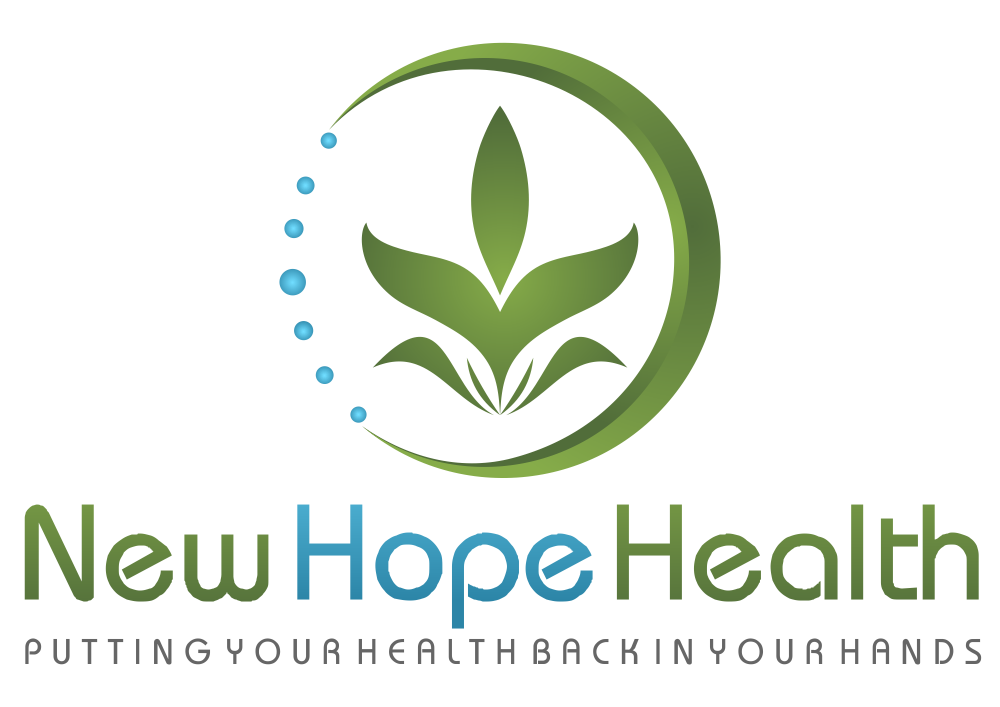
This is a quick post to educate those who are pregnant or preparing for pregnancy (or have a loved one in either of those categories). A woman’s health status before and during pregnancy will have a powerful impact on both the birthing process as well as the health outcomes of their baby. Here’s the low down…
What is going on in gestational diabetes mellitus (GDM)?
Let’s start by defining some terms.
Diabetes is a group of disease conditions where there is excess sugar in the blood from various causes. High blood sugar is the (oversimplified) result of both type 1 and types 2 diabetes. Both types over time have a downward spiral of negative effects on the body.1
Pre-gestational diabetes is when a woman who is already diabetic gets pregnant. High blood sugar upon conception and in the first 8 weeks of pregnancy when the baby’s organs are developing can lead to miscarriage or various developmental issues.
Gestational diabetes occurs during pregnancy in a woman who was not previously diagnosed as diabetic. This occurs in roughly 10% of pregnancies and of those about 90% return to normal physiology after they give birth. The majority of cases are diagnosed in the second or third trimester as a result of an increase in insulin resistance at this time.1
What’s happening in gestational diabetes?
Glucose (the sugar your body primarily uses for fuel) can cross through the placenta to enter the blood supply of the fetus. This is a normal and healthy occurrence … unless there is too much glucose entering the baby’s blood. In this case, the baby releases insulin to counter the glucose (an amazing design). Insulin is released in response to glucose is again a normal response; but in excess, the extra glucose is converted to fat and causes the baby to become too big for normal delivery, thus a cesarean delivery (C-section) is required (which has further implications).1
During pregnancy, there are extra hormones released such as cortisol, human placental lactogen (HPL), and progesterone which tend to increase glucose in the blood to ensure that the baby has enough fuel to grow. Cortisol, for example, increases in pregnancy and is associated with decreased glucose tolerance and thus an increase in insulin resistance.2 The problem is that these hormones also increase the cell’s sensitivity to insulin as well. This means there can potentially be unopposed glucose in the blood. This happens so that there is more glucose available to the fetus; but again, if it is too much, it becomes problematic for both Mom and Baby.
In most cases, if you are otherwise healthy and not considered high risk, medical doctors will do a glucose tolerance test around 26 weeks into your pregnancy to check for GDM. If you are diagnosed with GDM, controlling blood sugar with diet is the first line of defense, although your medical doctor may not have the nutritional training to properly counsel you with much specificity. Consistent and healthy dietary changes are usually very effective. If that doesn’t work, insulin can be prescribed. Remember that all medications have side effects, so nutrition and other lifestyle changes are always the first lines of defense.
What is a normal blood sugar response? How is it supposed to work?
In a healthy body, when glucose in the blood is increased (from food or drinks consumed), the beta cells of the pancreas are signaled to produce insulin. The insulin helps that glucose move into the cells, specifically the cells of the brain, muscles and liver, so it can be used for energy. Once the glucose is out of the blood and in the cells, it can either be used for energy immediately or stored in the liver in the form of glycogen for later use. This causes the blood glucose to go back down, which in turn causes insulin to also go back down as it is no longer needed (because there’s no longer excess glucose to be acted against).
What are potential risk factors that make a person more likely to get GDM?
Only about 10% of all pregnancies result in gestational diabetes. So what makes the difference in why some women have this issue and others do not?
Common risk factors include:
- Genetics:
- Woman with certain variants of the GIP gene have been shown to produce less insulin after meals as compared to other woman.3 However, although genetics is always a possible factor, it is not the most common and, even if you do have some genetic tendencies, you can often reduce their manifestation by changing your diet and lifestyle.
- Diet: Those with a diet low in fiber and high in processed meats and added sugars are more likely to contend with GDM.4 You have 100% control over this one which is great news!
- Obesity and Diabetes: Obesity and diabetes are often seen together. Both are risk factors individually and even more so collectively.5
- Age: Older maternal age is associated with an increased risk compared with younger mothers.6

There are also complications associated with GDM for the mom: increased risk of cardiovascular disease, type 2 diabetes and complications giving birth.6 Risk of cardiovascular disease actually increases by 44% in those who have had GDM.7
Complications for the baby include: A long term risk for obesity, type 2 diabetes and cardiovascular disease.6 This condition is manageable but it is important to make necessary changes to support optimal health for both Mom and Baby. Having GDM does not mean your baby will for sure have these issues but the chances are increased. Prevention is key!
But what if I already have GDM? How can I support myself (and my baby) nutritionally for the rest of my pregnancy?
- Avoid high cholesterol foods (meat, cheese, eggs) as they, especially eggs, are associated with a 77% increased risk in GDM.8
- Exercise. Resistance exercise improves glucose tolerance and insulin sensitivity.9
- Improve the microbiome of your gut by eating fermented vegetables. A healthy microbiome is associated with a lower risk of GDM.10
- Use cinnamon on your food. Cinnamon is a delicious way to improve insulin sensitivity. 1 gram per day is sufficient (which is about ¼ tsp).11 This is a healthy and delicious spice to add to your smoothies, oatmeal or tea.
What if I am planning to get pregnant but haven’t conceived yet? How can I ensure a healthy pregnancy, free of gestational diabetes?
Preparing for pregnancy is not a short answer but to get started, do the things below (as explained in more detail above) to reduce your risk:
- Improve your diet by eating more fiber and less processed meat and sugar
- Lose weight if you need to before conception
- Manage blood sugar
- Avoid animal products as much as possible
- Start exercising
- Eat fermented foods
- Add cinnamon to your diet.
In addition, drinking lots of pure water and getting adequate rest will also be helpful.
I hope you were greatly helped by this information. If you need more specific help, feel free to reach out to the New Hope Health Clinic. We’d love to support you in your pursuit of radiant wellness!
Resource List:
- Mahan LK, Escott-Stump S. Krause’s Food and Nutrition Therapy.; 2008.
- Hornnes PJ, Kuhl C. Gastrointestinal hormones and cortisol in normal pregnant women and women with gestational diabetes. Acta Endocrinol Suppl. 1986.
- Chang CL, Cai JJ, Cheng PJ, Chueh HY, Hsu SYT. Identification of metabolic modifiers that underlie phenotypic variations in energy-balance regulation. Diabetes. 2011. doi:10.2337/db10-1331
- Tobias DK, Zhang C, Chavarro J, et al. Prepregnancy adherence to dietary patterns and lower risk of gestational diabetes mellitus. Am J Clin Nutr. 2012. doi:10.3945/ajcn.111.028266
- Zhang C, Ning Y. Effect of dietary and lifestyle factors on the risk of gestational diabetes: Review of the epidemiologic evidence. In: American Journal of Clinical Nutrition. ; 2011. doi:10.3945/ajcn.110.001032
- Plows JF, Stanley JL, Baker PN, Reynolds CM, Vickers MH. The pathophysiology of gestational diabetes mellitus. Int J Mol Sci. 2018. doi:10.3390/ijms19113342
- Tobias DK, Stuart JJ, Li S, et al. Association of history of gestational diabetes with long-term cardiovascular disease risk in a large prospective cohort of US women. JAMA Intern Med. 2017. doi:10.1001/jamainternmed.2017.2790
- Qiu C, Frederick IO, Zhang C, Sorensen TK, Enquobahrie DA, Williams MA. Risk of gestational diabetes mellitus in relation to maternal egg and cholesterol intake. Am J Epidemiol. 2011. doi:10.1093/aje/kwq425
- De Barros MC, Lopes MAB, Francisco RPV, Sapienza AD, Zugaib M. Resistance exercise and glycemic control in women with gestational diabetes mellitus. Am J Obstet Gynecol. 2010. doi:10.1016/j.ajog.2010.07.015
- Crusell MKW, Hansen TH, Nielsen T, et al. Gestational diabetes is associated with a change in the gut microbiota composition in the third trimester of pregnancy and postpartum. Microbiome. 2018. doi:10.1186/s40168-018-0472-x
- Graham (F) G, Johnson EB, Johnson A, Anderson R, Devine P. Cinnamon for glycemic control in gestational diabetes: A randomized double-blind placebo controlled pilot study. Am J Obstet Gynecol. 2005. doi:10.1016/j.ajog.2005.10.306
Nothing said or implied in this post is intended to treat, cure, diagnose or prevent any disease. It does not take the place of a qualified health care practitioner and is intended for educational purposes only.

Dr. LeAnn Fritz, PhD
Dr. LeAnn is a practitioner, coach, speaker, consultant, and the founder of New Hope Health. She is also the author of The Quantum Weight Loss Blueprint, and Get Healthy Now. She is laser-focused on practical, evidence-based practices to empower her clients to get real results that last. She sets the bar when it comes to radiant health that will change every area of your life forevermore.
Recent Posts
Parasites- Living Inside Your Body, Without Paying Rent!
Parasites…I know…the thought of them living inside your body feels like something from a horror
Holistic Detox: A Naturopathic Doctor’s Guide to Cleansing Your Body for Optimal Health
Detox is a powerful way to reset your body and enhance your health. As a
Watermelon Slurpy…Upgraded!
It’s summer and it’s HOT! You’re looking for a refreshing cold drink that will give
Curious about achieving your highest level of health?
Schedule your consultation with Dr. LeAnn today, and get your health back in your hands.


